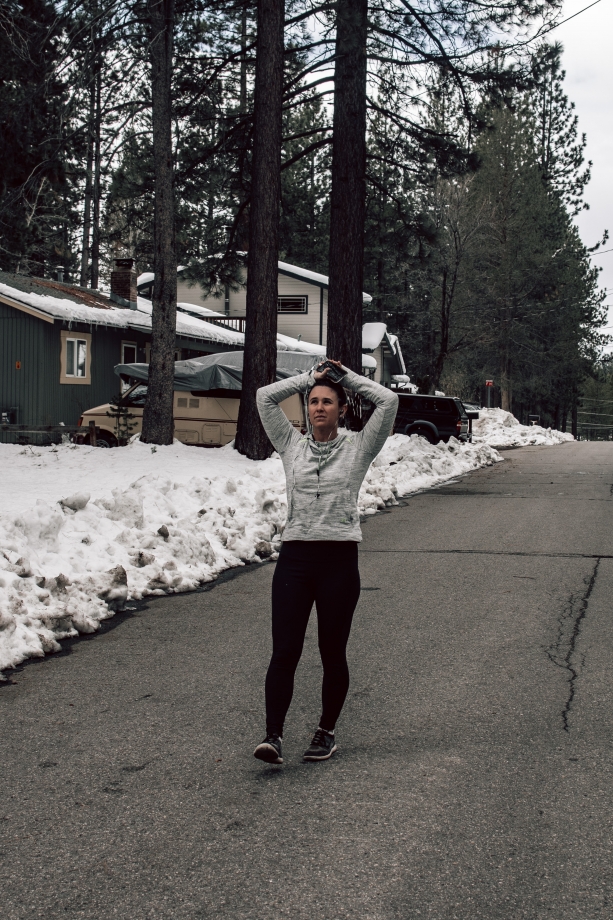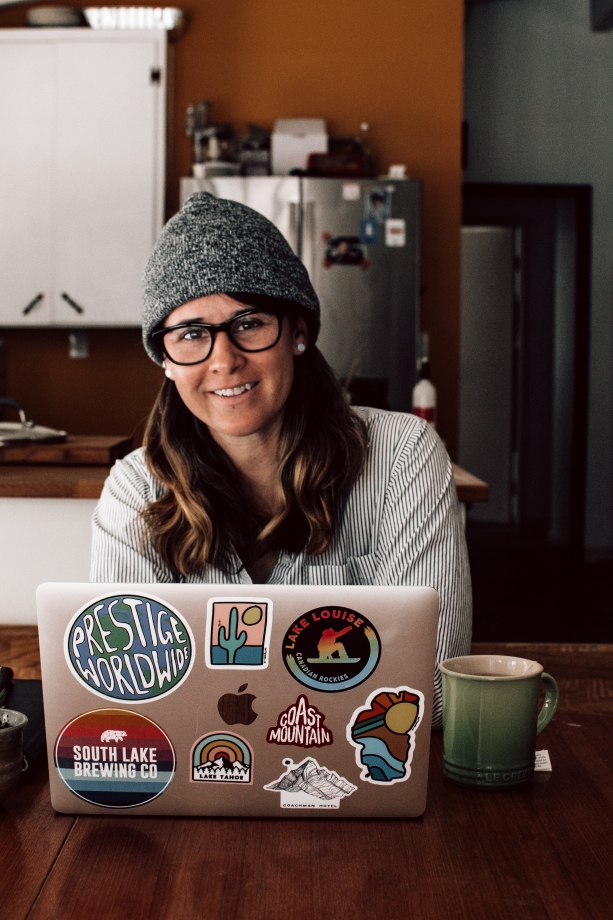
The idea of being able to work from anywhere is pretty rad, but once you’ve made the jump to remote work and digital nomader-y how do you actually go about getting your work done? I will tell you, the laptop on the beach scenario isn’t all that great. First off, the glare is a killer, second, sand gets in everything.
Since a lot of us are now working from home it’s a good idea to have some guidelines in place for actually getting your work done. The same rules of remote work apply regardless if you are at home or on the road.
These are the guidelines I follow in my everyday life to make sure I get my work done both at home and on the road (but like everyone else, I’m at home for the foreseeable future).
Set business hours

Just like you are going into an office, have set hours that you will be online and available to customers, clients, and coworkers.
Your work life and your home life can start to bleed together when you are working from home so it’s good to have some separation. When you have set business hours that means you shouldn’t be turning on Netflix in the middle of the workday or taking calls in the evening when you are trying to relax.
Have a schedule

Keep a regular schedule, just because you don’t have to be up at 7AM to be into work by 8, doesn’t mean you should stay up all night watching X Files reruns, as tempting as that may be. Having a schedule also means that you will take much-needed breaks and remember to do things like eat and exercise.
Heres what a typical day looks like for me:
- 7AM – Wake up, have coffee and read a book, journal, plan out the day.
- 8/8:30AM – Get up, get dressed, have breakfast, check emails, do any organizing for the day.
- 9AM – Start work, note, I’ve already planned out my goals and tasks for the day and have gotten myself organized so I know what I’m working on and can jump right in. I try to prioritize the hardest or most brainpower heavy tasks for first thing in the morning, mostly because I am more easily distracted in the afternoons.
- 1PM – Lunchtime, take a walk or get outside for a little bit, run any errands
- 2/2:30PM – Back to work, in the afternoons I tend to do easier or more fun work tasks like photo shooting, photo editing, and social media planning and posting.
- 4-6PM – Depending on the day and what I’ve been doing I’ll usually quit working any time between 4 and 6. If I’ve lost focus or am not making progress on anything, I’ve learned that it’s better to stop than just staring blankly at the computer. On the flip side, if I’m on a roll I’ll continue work until the task is done or until I peter out.
- 4-10PM – I generally leave my evening pretty open for whatever I feel like doing, those things usually include exercise (at-home yoga, work out videos, or going for a run), reading, playing video games, talking to friends and family, making dinner, hanging out with Rob, and of course watching X Files reruns.
- 10/10:30PM – Bedtime, drink tea, do my skincare routine, take my vitamins, and brush my teeth.
Set goals


Whether you are freelancing and making your own goals or you are working for a company that is giving you goals to work towards, the goals themselves are important. They are the starting place from where you will reverse engineer all the steps you need to do to meet that goal. Once your goal is broken down into steps you can figure out what tasks you need to do to complete each step. Those tasks become your to-do list, giving you a clear picture of the work that needs to be done. And having everything broken down into smaller tasks is more manageable than one overwhelming goal.
Here’s an example of one of my weekly goals broken down:
Goal: Publish a blog post
Steps:
- Get ideas for content
- Write blog post
- Get photos for the post
- Edit
- Publish
Tasks:
- Get ideas – research relevant topics; take notes, organize notes; decide on a subject
- Write a post – research topic; write an outline; write a draft
- Get photos – do photoshoot if necessary; search through archived photos for relevant photos; edit photos; resize them for the web; upload them to the blog server
- Edit – reread 1st draft of the blog post and make any necessary content changes; read again looking for spelling, grammar, and structure issues; run the post through Grammarly to catch any other spelling or grammar issues; copy and paste the content into WordPress and run Yoast SEO and Readability, correct any issues that come up; layout post with photos and headings; put into preview mode so I can see how everything looks before publication; reread in preview mode to make catch any last mistakes and make sure all content is in the right place with photos and layout.
- Publish – schedule post to be published on the appointed date (I keep track of my editorial calendar using Google Calendar); copy link and schedule corresponding social media posts to go out after the blog post has been published.
Publishing a blog post might seem like a simple goal at first, but once you get down to it, there are a lot of steps and small tasks that need to be done. By knowing what tasks and steps are needed to complete your goal you’ll be able to stay on track and know exactly what you’re doing.
Your space matters


This is a big one, your space and where you work really matters. It might seem fine to stay in bed and with your laptop, but it’s not good in the long run.
Ideally having a separate room or section of a room to work in is best. That way your home life and work-life have some small bit of separation and all your work things can be contained in one area.
We also have mental associations connected to the rooms in our house, for example, bedrooms are for sleeping, the living room is for relaxing, and the kitchen is for eating. If you start working in your bedroom or on the couch your brain will think you are in relax mode because that is what those spaces are usually used for, making it harder to concentrate. Studies also show that people who work in their room/on the bed tend to have trouble sleeping because that space has become associated with working and productivity.
We are lucky enough to have a spare room in our house that we’ve converted to an office, but I know not everyone has that kind of space. When I lived in San Francisco and only had only a 10×12 foot bedroom to my name I set up a small desk in the corner and used that as my workspace.
It doesn’t matter where the space is or how big, but as long as you have a designated workspace that you can go to in the morning and leave when you need a break that will be enough.
Take breaks


There is no way to be productive for a full eight hours, you need breaks. To keep your mind fresh and functioning you need to think about other things, you need to think about nothing too for that matter. Take a lunch break just like you would when you were in an office.
More importantly, take a break when you feel like you need it. When I am dealing with an issue or having a hard time solving a problem I like to get outside and exercise, time away from the problem and the ability to clear my mind make it so much easier to come back and work it out. The same is true if you are feeling anxious and having trouble concentrating, get up and go do something else for a little bit. Exercise is my favorite anxiety treatment but do whatever it is that makes you happy and helps you clear your mind.
Have human contact

You never thought you’d miss your co-workers so much did ya? Without having those random social interactions at the coffee machine or water cooler things can get lonely. If you are working for a company make sure to have actual calls with your boss and coworkers rather than just email and slack, it’s good to hear human voices every so often.
If you are working for yourself or freelancing call your friends or family on your breaks. Better yet, find a friend to be a work accountability partner. Have daily check-ins and calls to bounce ideas off of each other. There are also digital nomad groups who have virtual meetups! Digital Nomad Girls is a great one, but there are others out there too.

The biggest thing to remember about working from home or on the road this that without institutionalized structure you need to create your own. Structure creates stability and stability will keep you grounded and on track to meet your goals.
READ MORE:
Dealing with Burnout on the Road
How I Keep Routine and Structure on the Road
Where to Find Remote Work
The Best Digital Nomad Jobs (by Category)
Starting a Creative Career
Like this post? Pin it!






Pingback: How To Have The Best Staycation - Nattie on the Road
Pingback: Travel in the Time of Coronavirus - Nattie on the Road
Pingback: The Quarantine Survival Kit - Nattie on the Road
Pingback: The Best Virtual Tours on the Internet - Nattie on the Road
Pingback: Where to Find Remote Work - Nattie on the Road
Pingback: 5 Digital Nomad Mistakes and How to Avoid Them - Nattie on the Road
Pingback: How To Become A Digital Nomad - Nattie on the Road
Pingback: The Best Digital Nomad Jobs (by category) - Nattie on the Road
Pingback: How I Keep My Routine and Structure on the Road - Nattie on the Road